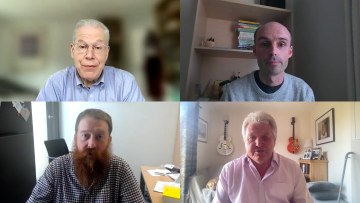Background
Among the many asylum and sanctuary seekers and academics seeking refuge are mathematicians and statisticians; they are part of the global mathematical sciences community. However, when they come to the UK they may be unable to work and so feel isolated from the subject they love. They are in personal and intellectual limbo.
Once and Twice Categorified Algebra
Abstract
I will explain in what sense the theory of finite tensor categories is a categorification of the theory of finite dimensional algebras. In particular, I will introduce finite module categories, review a key result of Ostrik, and present Morita theory for finite categories. I will give many examples to illustrate these ideas. Then, I will explain the elementary properties of finite braided tensor categories. If time permits, I will also mention my own work, which consists in categorifying these ideas once more!
16:00
Wilson loops: the old, the new and the unstable
The speaker will be in-person. It is also possible to join virtually via zoom.


